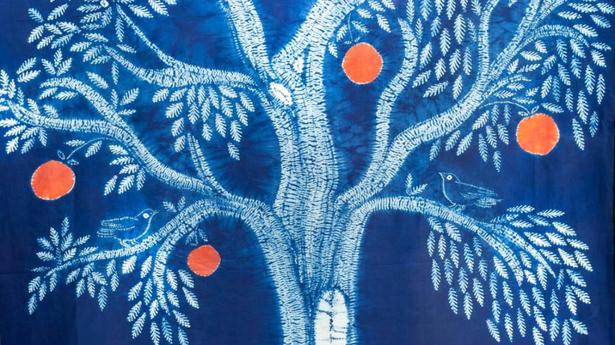
Don’t wait to dye another day
The Hindu
An exhibition showcasing the intricacies of dyeing will be held at Bangalore International Centre this weekend
Vibrant colours, striking patterns and flowy fabrics — much goes into the final product that one wears without much thought. However, for those who would like to get into the nuances of dyes and textiles, Bangalore International Centre (BIC) will be hosting an exhibition, ‘Natural dye stories by Label Arati,’ and related workshops from April 30 to May 3.
Conceptualised and curated by Arati Monappa who established the label, the exhibition will showcase various dyeing and embroidery techniques in use by Indian artisans.
“The purpose of this exhibition is to showcase the beauty of natural dyes. It is an assemblage of pieces coloured with natural dye, which I started gathering; today we have over 100 Indian practitioners who use natural dye and over 300 pieces are going to be on display,” says Arati, who adds that the event was initially meant to mark the label’s 25th anniversary which got delayed due to the pandemic.
“I had a lot of leftover fabric from over the years, which were used for cushions and other furnishings. We also rewove some of those remnants into fabric — all these pieces will be installed at the exhibition,” she says.
Apart from the release of a book documenting the journey of Label Arati, five natural dye workshops will also be held. Workshops on Eco Printing, Natural Dyes and Natural Mordant Dyeing, Dyeing with Kitchen Waste and two on the traditional techniques of Mata ni Pachedi from Gujarat and Kalamkari, will be held. The fee for the courses range from ₹1,500 to ₹2,000.
A mordant is a substance used to affix dye to fabrics and are not usually plant-based. The use of natural dyes dates back to India’s Vedic period when the Indian Madder (Rubia cordifolia, commonly known as manjistha) was used to obtain red pigment, says Pushyamitra Joshi of EcoFab Bharat, Indore, who will be hosting one of the workshops at the exhibition. “The leaves and bark of the Lodh tree (Symplocos racemosa) can be used as a mordant in place of alum. This makes its use and subsequent disposal totally safe for the craftsman and the environment,” he says.
Pushyamitra will demonstrate how to dye fabric using Lodh as a mordant and participants will be provided with kits containing Lodh and manjistha to replicate the process at leisure. “Apart from reviving an ancient practice, the use of plant-based mordants ensures brighter shades as it is more potent. That it is completely eco-friendly is a huge plus,” he adds.

Podcasts have become our best friends, especially during the Covid-19 pandemic. Whether you are cooking, sketching or going on an evening walk, there is a show that matches your mood. From horror tales to informative conversations to just two friends talking about anything & everything relatable, podcasts have become a part of our lives unknowingly. Over the years, more voices have joined this audio landscape and filled it with stories that resonate with our lives. Podcasts serve as a reminder that everyone has a story worth telling and listening to!










